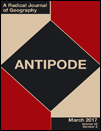The Danger of Effervescence
nmccoy1
 Recently, CNN reported on the case of a woman in Papa New Guinea being burned alive for witchcraft (see below). Aside from the echoes to our own history of witch hunts, this case also highlights the collective effervescence, specifically religious, of which Durkheim was interested. According to Durkheim, group energies can culminate in a kind of frenetic moment and can itself construct a collective reality. This effervescence marks the delineation of the space between a heightened collective experience and mob mentality. Marking an unknown or possibly threatening force, witches in this case, Muslims after September 11th, homosexuals and many other examples, represent an impetus to the collective energy that can result in anger or exaltation, wonder or fear. What this kind of collective action demonstrates is that the relationship between the individual and the collectivity is not as important to understanding acts of violence, devotion, hatred, or kindness as is the relationship between individuals within the collectivity. In the moment of effervescence, at the culmination of a group energy into a particular action, a reality is constructed that may be motivated by something much stronger than individual will and belief systems. By burning this woman at the stake, do these individuals retain their subjectivity or simply get caught up in the moment of effervescence?
Recently, CNN reported on the case of a woman in Papa New Guinea being burned alive for witchcraft (see below). Aside from the echoes to our own history of witch hunts, this case also highlights the collective effervescence, specifically religious, of which Durkheim was interested. According to Durkheim, group energies can culminate in a kind of frenetic moment and can itself construct a collective reality. This effervescence marks the delineation of the space between a heightened collective experience and mob mentality. Marking an unknown or possibly threatening force, witches in this case, Muslims after September 11th, homosexuals and many other examples, represent an impetus to the collective energy that can result in anger or exaltation, wonder or fear. What this kind of collective action demonstrates is that the relationship between the individual and the collectivity is not as important to understanding acts of violence, devotion, hatred, or kindness as is the relationship between individuals within the collectivity. In the moment of effervescence, at the culmination of a group energy into a particular action, a reality is constructed that may be motivated by something much stronger than individual will and belief systems. By burning this woman at the stake, do these individuals retain their subjectivity or simply get caught up in the moment of effervescence?
CNN “Woman Suspected of Witchcraft”





